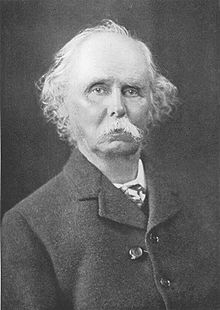Marshall, Alfred

Bio: (1842-1924) British economist. Alfred Marshall attended St. John's College, Cambridge, where he studied mathematics, classics, and philosophy. Marshall lectured at St. John's College from 1868 until 1877, and after that, he lectured at Bristol University College and Oxford. In 1884 he become a professor of political economy at Cambridge, where he stayed until his retirement in 1908. He is considered one of the founding fathers of neoclassical economics as he contributed to the development of modern economic theory. Marshall's groundbreaking ideas, particularly in microeconomics and welfare economics, have had a lasting impact on the discipline.
Alfred Marshall is perhaps best known for his formulation of the theory of supply and demand, which he presented in his seminal work, Principles of Economics (1890). Marshall explained how the interaction of supply and demand determines market equilibrium and prices. He introduced the concept of the demand curve, representing the quantity of a good or service that consumers are willing to buy at various price levels, and the supply curve, representing the quantity that producers are willing to offer at different prices. The point of intersection between these curves is the market equilibrium, where the quantity demanded equals the quantity supplied, establishing the market price.
Marshal introduced the concept of “elasticity” which relates to the responsiveness in supply and demand of a commodity due to price changes. unitary elasticity happens when that responsiveness is proportionately equal to the price change. In cases when responsiveness falls above the price change market exhibits inelasticity, and if responsiveness is greater than price changes then that state is elastic.
Another significant contribution by Marshall was the introduction of the concept of consumer surplus. He demonstrated that consumers often receive more satisfaction, or utility, from a good than what they pay for it. Consumer surplus measures the difference between the price a consumer is willing to pay for a good and the actual price they pay in the market. This concept provided a new way of understanding consumer behavior and welfare, laying the groundwork for welfare economics.
In addition to consumer surplus, Marshall also explored the idea of producer surplus. This concept represents the difference between the price at which producers are willing to sell a product and the price they actually receive in the market. Producer surplus is a measure of the benefits producers gain from selling goods at a price higher than their production costs. Together with consumer surplus, producer surplus contributes to what is known as total welfare or social surplus in a market.
Marshall's contributions were not limited to understanding the market as a whole. He delved into the theory of the firm, focusing on the firm's objective to maximize profits. He analyzed the cost structures and factors that influence a firm's decisions on production levels and pricing.
Fields of research
Capitalism Consumerism Corporations Economy Entrepreneurship Industry Institution and Organization Management Market Motivation Social PolicyTheoretical approaches
Neoclassical School (Economics)Main works
The Economics of Industry (1879);
Pure Theory of Foreign Trade and of Domestic Value (1879);
Principles of Economics (1890);
Elements of Economics of Industry (1892);
Industry and Trade (1919);
Money Credit and Commerce (1923).

